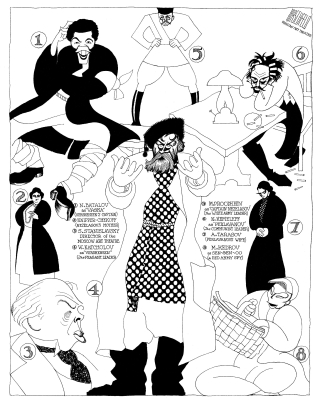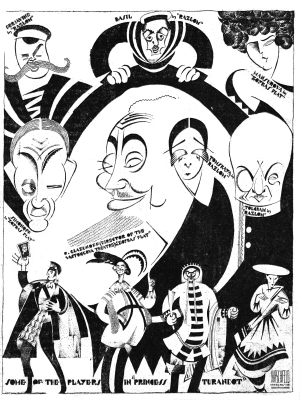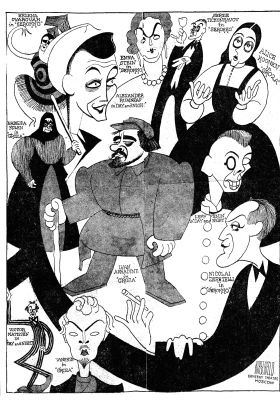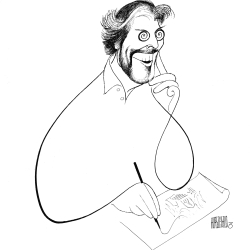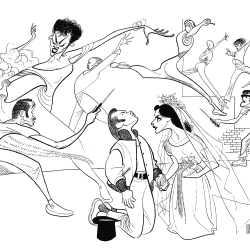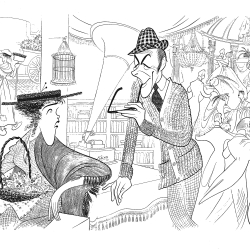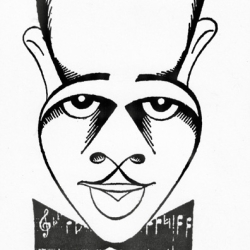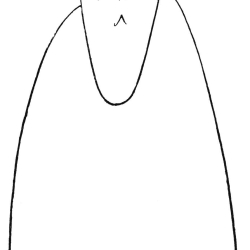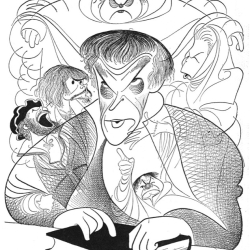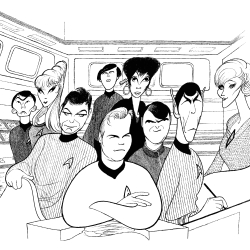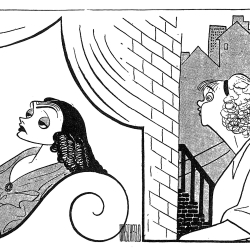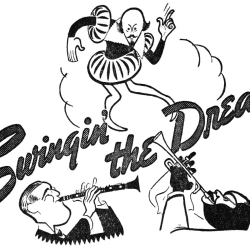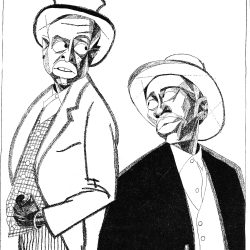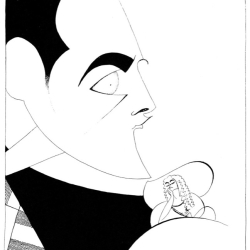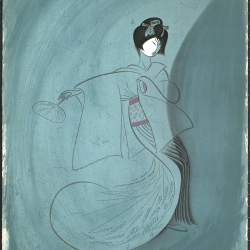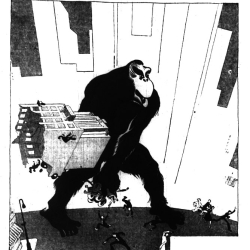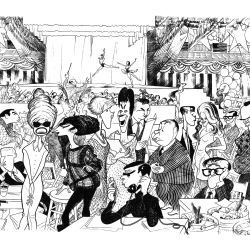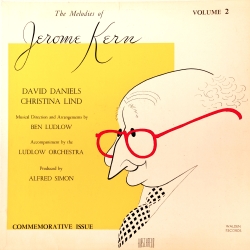The Book That Never Was
“The only time I ever saw regret cross Hirschfeld’s face was in talking about this book,” recalled Creative Director David Leopold about Hirschfeld’s heartbreak when his entire illustrated manuscript documenting 1920s Russian Theatre and Film was lost forever.
In 1928, Hirschfeld went to Russia by way of France on his honeymoon and as an international correspondent for the Herald Tribune. He was impressed with the largely experimental and progressive Russian Theatre of the time.. Over five months he went to see productions and films and interviewed the leading directors and producers of the burgeoning scene, which would soon be at its apex. Some of these interviews were first for a series of illustrated articles in the paper, but with his eye to his first book.
One of the most popular of these new plays in the Russian repertory was Armored Train 14-69 by Vsevolod Ivanov. Adapted from his novel, the play is about a group of peasants overtaking a White Army’s armored train. Ivanov himself served in the Red Army during the Russian Civil War, and any play that wanted to be well received by the state would be sentimental toward the Bolsheviks. The central figure in the drawing is the peasant leader, portrayed by Kachalov, one of the most renowned Soviet actors, who had played Hamlet in the groundbreaking symbolist production of 1911 directed and designed by Gordon Craig.
The play had its debut in 1927 at the Moscow Art Theatre, under the direction of the legendary Constantin Stanislavki and Vladimir Nemirovich-Danchecko. The Moscow Art Theatre was the most respected Soviet theater troupe of its time. New York’s historic Group Theatre had it’s roots with the MAT. After their 1923 American tour, many MAT members stayed in America and trained Group stalwarts such as Lee Strasberg, Stella Adler, and Harold Clurman, who adopted their techniques into the Method Acting.
Upon his return to New York, Hirschfeld gave his only copy of the manuscript and illustrations to his publisher Boni and Liverwright. After some time, he inquired as to the status of the book, whereupon he learned that the entire manuscript and illustrations had been lost. Only a handful of drawings from the Russian trip survived, as they had been sent to the paper with insturctions to have them sent to hang on the walls of the showbiz hangout, Dave’s Blue Room, which sought to be like a modern French café, where caricatures lined the walls. Hirschfeld kept them in the thin green frames from the restaurant for 75 years. Two of them, Lubova Yarovaya and Armored Train 14-69 were featured in the New York Historical Society exhibition, The Hirschfeld Century in the summer of 2015. While the book they were intended for is now lost forever, we can still enjoy these few drawings that defied all odds and escaped destruction because of the negligence of his publisher.
Katherine Eastman
Archives Manager
